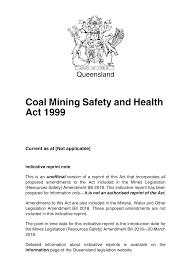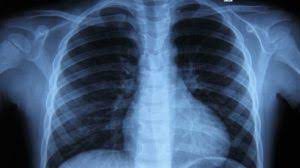
Cloud over Peabody’s reputation lingers after Goonyella Fire October 9 2018
Cloud over Peabody’s reputation lingers after Goonyella fire
Matthew Stevens Columnist
A high-level coal union circular raises yet more questions over the progress of Peabody Energy’s North Goonyella underground mine from near-human tragedy to the prospect of potentially permanent closure of what was the recovering US coal giant’s most profitable Australian mine.
To my eyes the union note, which is rich in evidence-based conclusions about the likelihood of the long-term shut-in of North Goonyella production, stands further evidence of either frailties in the information flows between the miner’s operational management and Peabody HQ in St Louis or of holes in the miner’s public disclosure protocols.
Certainly, as of September 26, the leadership of the Queensland branch of the coal union was operating on a better base of evidence and the knowable options for North Goonyella than were Peabody’s shareholders.
The circular was written by the North Goonyella union lodge president Luke Ludlow and it was sent as an update to a broad church of the Queensland leadership of the mining and energy division of the CFMEU.
Ludlow’s note, which carried frightening detail of massive spikes in the levels of dangerous and volatile gases and confirmed fears of a potential explosion inside the mine, warned only a “miraculous change in circumstance” in the days ahead would prevent critical mining equipment being sealed in the mine in the name of preventing further calamity.
“Our mine site has been abandoned in the sense that, in case of an explosion underground, we need to have exclusion zones,” Ludlow told his union peers.
“We have seen some haze coming out of our main fan shaft but nothing of great alarm at this moment with theories around the hot and cold air mixing to create this effect but time will tell in this aspect,” he said.
“To summarise,” Ludlow continued, “our mine is not in a good way and the reality of sealing a 3rd longwall in our mine is right in front of us unless we have some miraculous change in circumstance in the coming days,” the lodge president wrote.
To refresh here, it is now clear that miners were withdrawn from the North Goonyella coal mine a full three weeks before Peabody deemed it necessary to inform investors with a filing to the US Securities and Investments Commission that confirmed high gas levels had forced the suspension of mining.
The Financial Review coverage carried Peabody’s rejection of claims that the mine had a problem with super-heated coal and that management ran the risk of losing the massive and expensive long-wall equipment that was in the process of being shifted to a new panel.
The statement Peabody lodged with the SEC in September 18 said, in part:
“Peabody is well over halfway through the two-month longwall move at this point. The longwall move, which was expected to be completed in September, is now targeted for completion in the early part of the fourth quarter.
“Prior to this time, the company had been trending to the upper end of its 2018 metallurgical coal sales volume targets, and those targets have not been revised. The company intends to provide further updates on or before its earnings release near the end of October.”
The mine subsequently self-immolated, mining equipment has been substantially lost and the future of mining at North Goonyella is now a subject of considerable doubt.
On Friday, September 28, Peabody told the US SEC that there had been evidence of a fire in the mine and warned its owners and the rest of the coking coal market that they should not expect production from the mine through the December quarter.
That disclosure triggered a 13.5 per cent fall in the Peabody share price even though the company reasserted its standing guidance for Queensland coking coal production, which is that it will range between 11-12 million tonnes.
But that September 28 arrived a full two days after Ludlow warned his peers that Peabody required a miracle to prevent long-term interruption to production and that the gas mitigation plan raised serious doubts over the mine’s future and a full three weeks after the Financial Review warned the company of claims that the mine risked spontaneous combustion.
For the record, the latest reports are that the fire is likely out but the cloud over Peabody’s reputation lingers.
https://www.afr.com/companies/energy/cloud-over-peabodys-reputation-lingers-after-goonyella-fire-20181009-h16ex9


